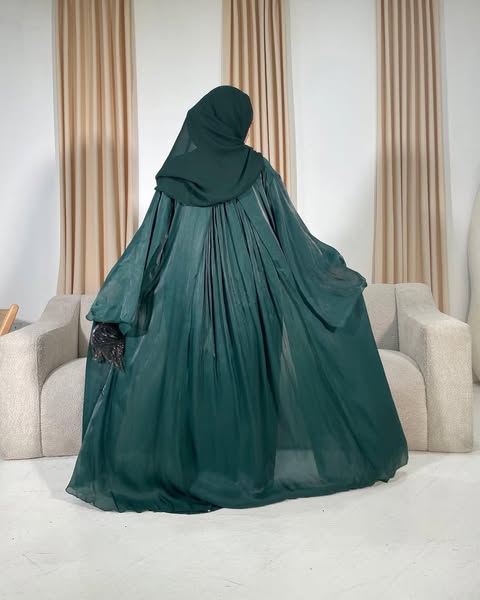Blog
Burka is a Symbol of Modesty, Faith, and Cultural Identity.

The burka is one of the most recognizable yet often misunderstood garments in Islamic modest fashion. Worn by Muslim women as an expression of faith, privacy, and cultural tradition, the burka carries deep significance beyond its physical appearance.
In this blog, we explore:
✔ The meaning and religious context of the burka
✔ Different styles and regional variations
✔ Debunking common misconceptions
✔ How modern designers are reinterpreting traditional burkas
- What is a Burka?
The burka (also spelled “burqa”) is a full-body outer garment that covers the wearer from head to toe, including the face, with a mesh screen or veil over the eyes. Key features:
Full coverage for modesty (hijab of the entire body)
Face veil (niqab) integrated into the design
Flowing silhouette for comfort and ease of movement
Religious & Cultural Significance
Islamic Modesty: Many wearers view it as fulfilling Quranic principles of humility and privacy.
Cultural Tradition: Predominantly worn in Afghanistan, Pakistan, and parts of the Gulf.
Personal Choice: For many women, it’s a voluntary act of devotion, not oppression.
- Types of Burkas & Regional Variations
A. Afghan-Style Burka
Iconic blue or other solid colors
Heavy fabric with embroidered eye mesh
Loose and tent-like for full coverage
B. Gulf-Style Burka (Batoolah/Boshiya)
Black, lightweight fabric (often crepe or chiffon)
Separate face veil (niqab) paired with an abaya
More fitted than the Afghan style
C. Modern Designer Burkas
Luxury fabrics like silk and lace
Subtle embellishments (embroidery, beadwork)
Breathable mesh for better visibility
- Common Misconceptions About the Burka
❌ Myth: “Women are forced to wear it.”
✅ Reality: Many choose it voluntarily as an act of faith.
❌ Myth: “It’s only worn in oppressive regimes.”
✅ Reality: Muslim women worldwide wear it by personal conviction.
❌ Myth: “It’s outdated and impractical.”
✅ Reality: Modern burkas are designed for comfort, breathability, and style.
- The Burka in Modern Fashion
While traditional burkas remain prevalent, contemporary designers are innovating with:
✔ Lighter, more breathable fabrics
✔ Adjustable face veils for convenience
✔ Elegant embroidery and detailing
✔ Convertible designs (removable niqab)
Some high-end brands now offer luxury burkas for special occasions, proving that modesty and fashion can coexist.
- Why Respect & Understanding Matter
The burka is more than clothing—it’s a personal and spiritual choice. Rather than judging, we should:
Listen to women who choose to wear it
Respect cultural differences
Celebrate diversity in Islamic fashion
Final Thoughts
The burka represents faith, identity, and tradition for millions of Muslim women. Whether worn for religious devotion or cultural pride, it deserves respect and understanding in a diverse world.
At SHARIYAAH, we support every woman’s right to dress as she chooses, with dignity and confidence.
📌 Follow us for more insights on Islamic modest fashion!
What are your thoughts on the burka? Share respectfully below! 💬👇
